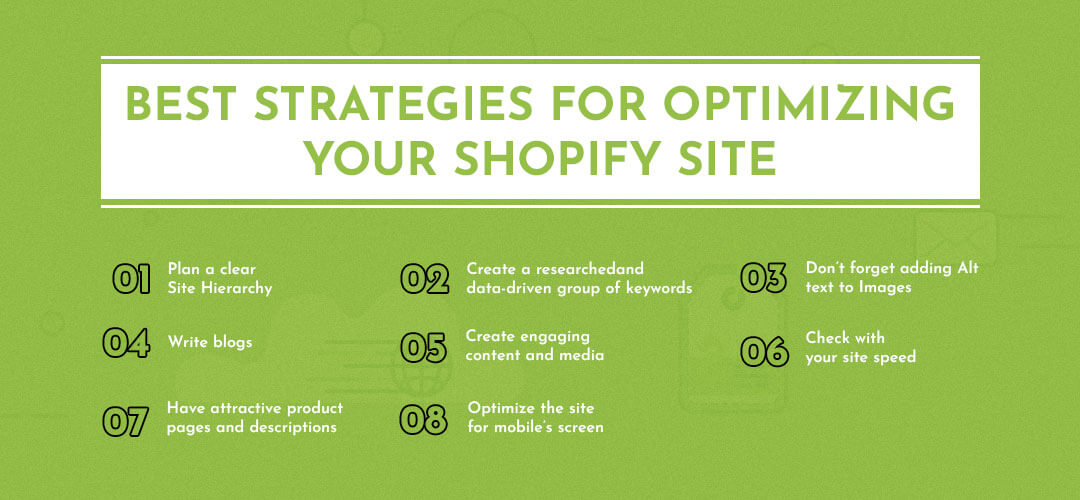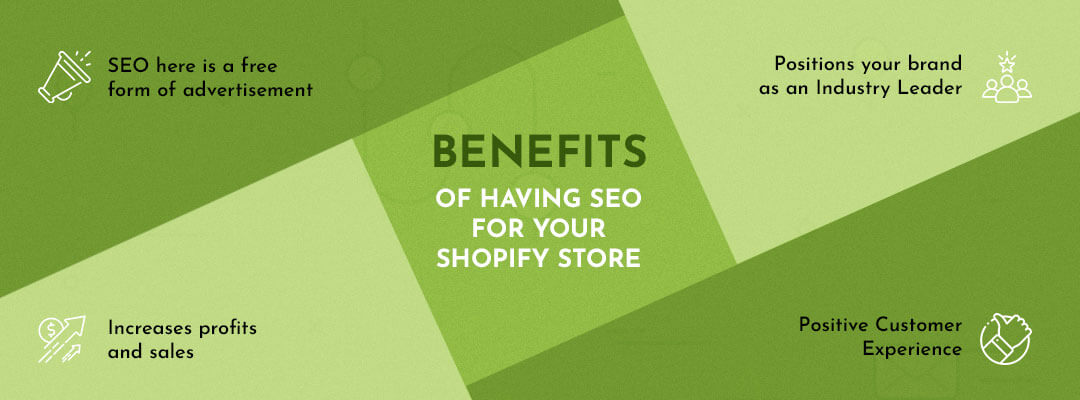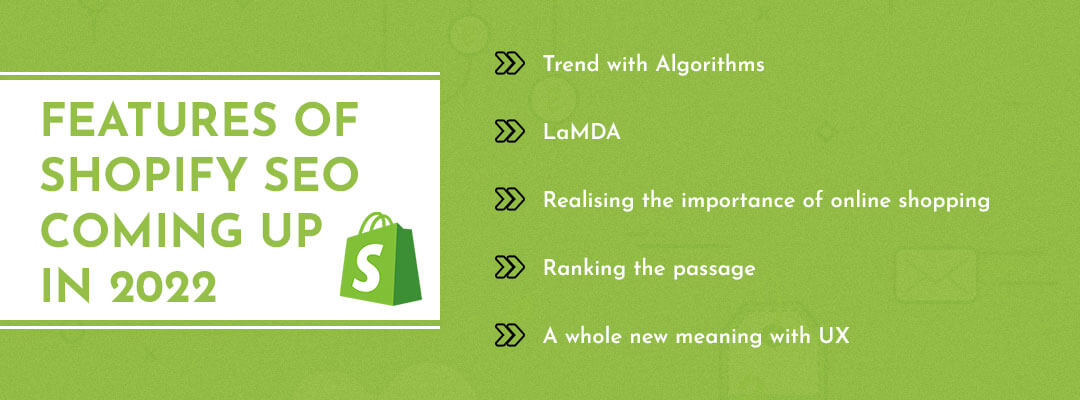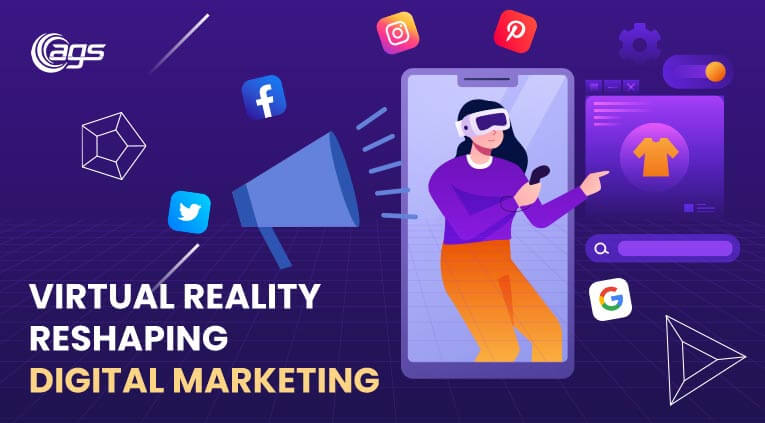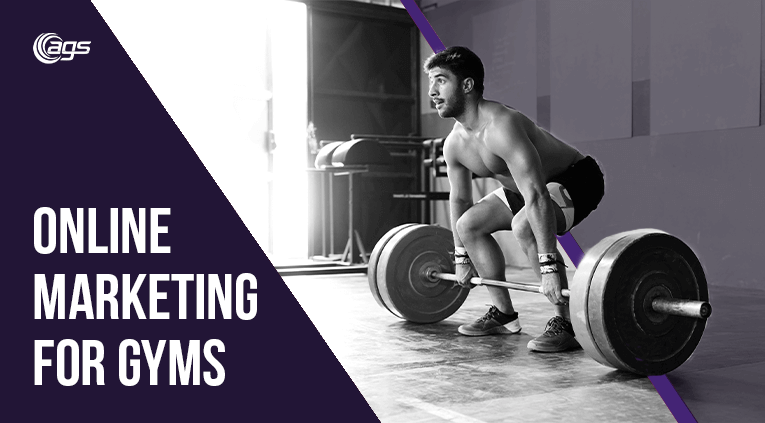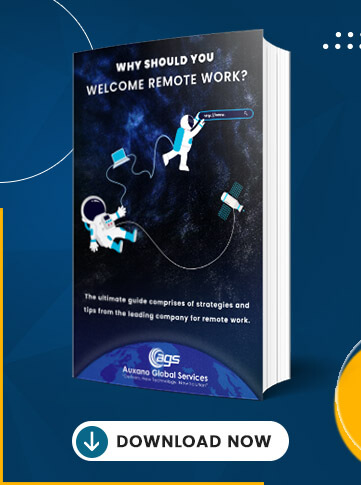The shopping ease that the internet brings is pulling many consumers towards it. Shopify, one of the largest e-commerce platforms gives businesses a space to engage with their customers. During COVID-19 online shopping has shifted from a luxury to a necessity.
As the popularity rose, people started using an e-commerce platform that attracted tons of new sellers. Also, platforms like Shopify have given many businesses a space to have a successful turnover. Now, in this large group of competitors, it is important to survive and give your best.
Shopify SEO Services can help you in creating a fruitful space in the e-commerce platform. Learn how to make your shop the most visited and start your journey with this briefly written guide for Shopify SEO in 2024.
Statistics for Shopify
Before getting into optimizing the content on Shopify, let’s get your thoughts clear on the current market value of the e-commerce platform through researched facts and surveys.
- Shopify is the most popular e-commerce platform globally with more than 23% of the market share in the US.
- The e-commerce platform provides over 6000 apps on its Shopify app store for a customized user experience.
- More than 1.75 million merchants sell through Shopify with 175 countries in which it is used.
- Shopify handled around 20% of all e-commerce websites in 2020.
- Major brands like Nestle, Pepsi, Unilever, Budweiser use Shopify.
Understanding Shopify SEO
SEO simply means to improve content as to have a rise in organic rankings on SERPs. Now Shopify SEO is not very different, its optimization is also about strategizing practices that pull up the sites on the top.
Shopify SEO tools focus on optimizing websites according to Shopify rather than a generalized one. It fixes problems that are more specific to Shopify rather than any other website. It includes creating a comprehensive SEO strategy including meta tags, backlinks, website speed, and many more.
Best Strategies for Optimizing your Shopify Site
After understanding the basics of Shopify SEO and how it works, here is a list of 8 strategies you can look up for deciding how to plan the optimization. These Shopify SEO tips will help you in creating a clear list in your mind.
1. Plan a clear Site Hierarchy
With a clear structure of your site, both customers and search engines can navigate your content easily. Moreover, for a search engine, it becomes easy to crawl each page and determine which ones are important.
You can do this by creating categories and subcategories that link with each other. Putting it simply, think about making a physical store and emphasize which sections are the most important and relevant for the visitors.
2. Create a researched and data-driven group of keywords
Using the correct set of keywords will optimize your pages for search terms that are used by the customers. It will help you in attracting potential consumers and tell the search engine about your site.
There are generally four main places where you can add keywords to improve the SEO for your online store. Consider these four as page titles, meta descriptions, ALT tags, and content on a page. Highlight your business and specialization through keywords.
Some examples of keywords are here. If you have a business related to shoes, consider shoelaces, no tie shoelaces, boots with laces, and many more. The fundamental point here is to note that your keywords should be related to the niche.
For finding a better group of keywords you should know the search intent. Here are four main categories of search intent.
1. Informational Intent:
People try to search for the information they need. Usually, searchers enter a specific question. Being specific or vague, you can access the top rankings by using keywords that most people use.
2. Navigation intent:
when shopping people also look for a specific website or brand, your website should be clear about what it wants to convey.
3. Transactional intent:
In this case, the searcher knows exactly what to buy and searches for it directly.
4. Commercial Intent:
With the objective of planning or future buying, people may search and investigate various sites and find the most suitable one.
Whatever the case from the above-mentioned categories, a well-researched group of keywords gets you people from the search engines.
3. Don’t forget adding Alt text to Images
Shopify stores need to be visual and attractive, the images not only engage but also play an important role in the selling journey. You can extend its benefits by adding alt text and descriptions into the images.
Apps like Alt Text by Shopify can also be a good option to link your images with relevant and well-researched keywords.
4. Write blogs
Creating and handling blogs might be a separate task to manage, but it facilitates more attraction to your site. The more pages you have, the more chances are there that you will show up on the top. Better you can craft engaging and informational content, more visitors, or even conversion rate you are likely to have.
Keep in mind to note the common topics of top-ranking posts, your content should include certain types of information that consumers might be looking for. You can also review the related searches section, this will let you know other queries that users generally search for.
Blogs help your consumer to reach out to you. It’s also good to add backlinks to let more people find you through other websites. With all these it’s important to ensure that your Shopify blog isn’t just informational, add categories and sections to upsell your product.
5. Create engaging content and media
Enhance the customer experience by creating engaging and dynamic product pages with videos, 3d views of products, customer reviews, etc. These are the assets that hold visitors more to your website and increase the engagement rate.
Aim to create content that’s not ordinary, give people reasons to choose your blog over many other presets in the SERPs of a single search. Plan the topics and content you will create and post on the blog. You can think about consumers and what content will be relatable to them.
Consider your target market, ideal shoppers, and what problems they might have that they were guided to your page. Indulge more in the community of your niche and understand what consumers are asking for and why. This helps you take your business to the next level through strategic content.
6. Check your site speed
Around 80% of shoppers experiencing slow loading speed won’t return to the site again. In just 2 seconds your site should be Infront of the user. Because, when many others are available why would someone wait for your site to open?
Also, if people leave your site and the engagement rate drops, the search engine will also make your site irrelevant and thus decrease the ranking. You can increase the site speed by choosing a fast Shopify theme. Compressed images, and only adding media you need.
7. Have attractive product pages and descriptions
Including relevant keywords and well-thought descriptions with product titles, helps in getting consumers. The viewers will have a clear perspective of your products and services their perspective positively develops.
For having a successful product page, you have to ensure that it displays how your products are going to improve their lives and serve positively. Page design matters a lot, the arrangement of things will have a huge impact on consumer decision making.
Include good product photographs, as the impact has a long way to go for the brand. Highlight clear price justification, this will help consumers to understand the value behind the product you are selling. Craft a well-branded product page with brand image and logo.
8. Optimize the site for mobile’s screen
People choose the comfort of mobile screens for shopping. Being mobile-ready is a good strategy because if not then you will lose many of your potential buyers because of the poor site on the mobile screen.
Consider optimizing the tap targets by making all the buttons or images wide enough to be tapped by thumb. With this, have simple navigation and structure for the easier process even on smaller screens.
Make your text larger and viewable, small font is hard to read and discourages visitors to continue on the site. For mobile optimization, you have to cut down the information only to the most relevant one and then guide consumers through a link to another page.
How to utilize Product Page Optimization?
Optimizing the sites helps in improving customer engagement and SEO value. Also can be called landing page optimization, this is designed to convert visitors into buyers. Especially when competition is this tight, you need to make a place in the E-commerce business.
Best Practices for optimizing your product pages most reliably and fruitfully.
- Adding High-quality images of the products you are selling.
- Including more than just one image, for better understanding.
- Research, shortlist and add relevant keywords for the product in the page’s title, tags, and product descriptions.
- Share reviews, ratings, and testimonials of consumers.
- Ensure the page has good spacing as negative space for better aesthetics and clearance of information.
- Don’t forget to add video descriptions with perfect views of the product, don’t let the potential consumer go just because of poor product understanding.
- Incorporate consistent branding and logo placement in the website, so that you have better brand identity building.
Product pages are the part of your website that sells and brings revenue to the business, thus driving traffic here is essential. Without incurring the elements mentioned above visitors are less likely to be converted into potential buyers.
With ensuring to add the elements, you should also keep in mind to avoid some mistakes. These pitfalls demotivate the visitors to engage more and buy something from the website.
To avoid this, keep in mind the list of pitfalls mentioned below:-
- Unengaging product descriptions with poor information and language.
- Not including any reviews, ratings, testimonials, or case studies. How would a consumer believe you without knowing the prior records?
- Titles that are used by others too, this does nothing in selling and deteriorates the possibility of identity. You have to be unique to be recognized as an individual.
- Using anonymous URL for the website.
- Duplicating the content has the risk of losing many potential consumers. No one comes to your site to see something that they have already seen.
- Not incorporating internal links or proper backlinks. You should not give consumers a reason to go back and search somewhere else, cater everything possible they demand.
Now, you might be wondering if there is any potential way to know the metrics of gauging how product pages are working. To solve this, we have listed here 10 units of measurement for determining the success of optimized product pages.
1. Daily, weekly, and monthly unique visitors at the page
2. Active users for a similar amount of time for engagement
3. Average retention time measured daily, weekly, and monthly
4. Bounce rate
5. Average session time or tenure of people staying on a particular page
6. An Average of customer spend
7. Customer Acquisition cost
8. Customer Lifetime value
A well-optimized product page facilitates better ROI and sales. Focusing and investing in this section is not only fruitful but essential as it guides the consumers to what they were originally shopping for.
How do Category Page Optimizations work?
After product page optimization, it is essential to optimize category pages for making the online shopping experience easier for shoppers and enhance presence in SERPs. The fundamental objective of these pages is to divide an eCommerce store’s inventory into subsections.
Through these subsections, the users can easily navigate to specific products and can also find the website easily in search engines. Category pages focus on the keywords that consumers search for the most.
With keywords, there are other things to keep in mind too. Here are seven category page elements that improve on highly competitive keywords.
1. Meta titles and descriptions
This is the basic form of content optimization. The title tag is one of the most essential on-page elements that determine the keyword theme. The title and description together influence the search terms that help the website in getting a good ranking.
2. Writing relevant heading
To help search engines understand the context of a particular section it is important to make headlines that are relevant and simple. There are two types of headings, first is the primary one reinforces the title’s tag theme for the entire page and subheads emphasize supporting themes.
3. Including Text
Content and Text don’t need to be too highlighting or all over the page, just a para is enough if it has engaging and informational content. The objective for better content should be using descriptive keywords that fit naturally without repetition.
4. Use featured Content
Category pages can advertise sale items, loyalty programs, related products, or other information and features. Make sure that the text used is optimized with descriptive language and keywords.
5. Create links that are text relevant
Especially for Call to Action links, you should use language that is clear, simple, and engaging. Vague language misses a strong opportunity to increase the relevance signal of the linking page and destination.
6. Make sure to emphasize Category Navigation
The fundamental purpose of categories is to help shoppers find products they are looking for. Navigation is important to consider, as it affects the indexation, authority, and relevance of each page included.
7. Header and Footer links
Don’t use these links more than needed, judiciously using links in invaluable categories and subcategories helps a lot. Include links and pages based on keypad research and keyword mapping with high business value.
Setting up tracking and indexing tools for Google
Knowing what’s on your site and catering it to the correct audience is crucial for a good business on Shopify. To accomplish this, you have to make sure that you can track your online store-s visitors and review what is going on in your website.
Here we have listed two tools you can use for free.
1. Google Analytics
This is a cost-free web analytics tool created by Google for monitoring traffic and conversions on the websites. This tool is segregated into two types: one is Universal Analytics (the old version) and the second is Google Analytics 4 (the latest version)
As Shopify doesn’t support Google analytics’ latest version yet, you can create a universal analytics property. It offers robust tracking possibilities and helps in uplifting the SEO to the next level.
2. Google Search Console
Abbreviated as GSC, is another free tool by Google for analyzing the website and improving it. It helps in validating your site is reachable by Google and its spider can crawl to your Shopify Store.
For more benefits, it helps you in fixing indexing problems, and view how often your Shopify store appears in Google Search. You can also track your Google ranking. One of the most influential factors in this tool is a sitemap.
Sitemap is a file that has information about Shopify Store pages like blogs, product categories, and pages. It also shows how information on online stores is organized. It is important as it helps Google bots to find and index your pages.
For a complete process, you have to submit a sitemap file to GSC, so that Google can index your site. But as a part of Shopify, you don’t need to make one as Shopify stores automatically generate a sitemap.xml file.
Benefits of having SEO for your Shopify store
There are reasons why building an SEO strategy is a good choice for your Shopify Store. There are more benefits than increased traffic and a rise in sales after you hire a Shopify SEO Company.
1. SEO here is a free form of advertisement:
Optimizing the site is an easy and cost-effective way for the target audience to find you easily on search engines. A higher ranking will ensure that your product reaches a larger audience with minimal or no cost incurred on marketing.
The fundamental goal of any e-commerce is to reach more and more visitors and incur more and more conversion rates. This is made possible with the help of Shopify SEO, unlike other advertising mediums, this one asks for the minimum investment.
This advertising works by showing your presence up and ahead of the competition, with better rankings you will have more chances to communicate about your products.
2. Positions your brand as an Industry Leader:
Having your brand appear on the first page, through SEO will leverage a positive attitude by your consumers. People will see your website in a higher ranking and associate credibility with the products and services you offer.
Consumers would love to buy their products from a leading company. Through Mobile optimization, content engagement, and many other tools of Shopify SEO, you can create a brand identity for your company in the market.
SEO lets you communicate to the consumers in the most efficient and personalized manner. They will trust you for their product needs, and buy it after creating a positive brand image.
3. Increases profits and sales:
With increased traffic and brand exposure, you are undoubtedly going to boost customer growth and sales. The ultimate goal of any e-commerce platform or site is to have maximum profit. Getting the correct SEO leads in providing an opportunity for more people to see your product and hence increase sales and profits.
Higher your business scalability with Shopify SEO. As you will have more brand awareness and hence more consumers, your products will witness better sales. Shopify invites better Returns on your investment, so don’t worry about the money you spend, it is going to get back to you.
4. Positive Customer Experience:
SEO helps in an increased customer review, but also with a well-planned strategy, you can create a good customer experience. With relevant information and helpful content, consumers are going to refer to your services and site more.
What matters the most is an optimistic consumer experience, while they visit your website or post, have a look at products, and contact you. A good experience increases consumer retention and chances of spreading awareness through word of mouth.
Shopify SEO, with good content, higher running, and screen optimization not only brings consumers to you but multiplies their benefits and number of consumers.
Step by Step Process of Shopify SEO building
You might be wondering what is the process of creating Shopify SEO. Well, the process is not simple, but here we have made a streamlined step-by-step process with details so that you have a better understanding and can initiate a well-planned journey.
1. Get a Custom Domain for your Shopify Store
Firstly, you have to get for yourself a custom domain name. You can also get a default one, buy customized looks more professional and trustworthy. This results in getting more clicks in SERPs and gets you a higher ranking.
If you are a little confused about the ideas, use Shopify’s free business name generator. This helps you in checking domain name availability and automatically set up domain name configuration.
Elements to consider, while choosing a custom domain name:
- Relevant to the industry
- Short, Simple, and Clear
- Try to get .com. People are more likely to type it and it’s also widely used among international brands
- Use broad and descriptive keywords
- Easy to spell and memorize
2. Unlock Password Protection
Even if you are in an ongoing process and have an incomplete website, generate and unlock the password protection from finished pages. With password protection, you get security for your completed work.
With security, you can also let Google and other search engines discover, crawl and index your Shopify store.
3. Set up the tracking and indexing tools
Tracking and Indexing tools such as Google Analytics, and google search console is mentioned above. These tools were for google, but we have also gathered information about Bing’s tool.
Get into the Bing Webmaster Tools and verify your website. These tracking and indexing tools help you rank better and let people find you.
4. Work on the on-page and Off-page SEO
On-page SEO is the process of optimizing web pages to improve Search engine rankings, enhance engagement, and generate more relevant traffic. On-page SEO is simply what is visible to the users.
Off-page SEO is about building and generating links and other external signals. It includes Guest Posts, Social Media Marketing, Interacting with influencers, and many more that help you attract more people.
5. Work of researching for Keywords
Keywords are of a wide spectrum, one can be “Sneaker” or another can be long-tail keywords like “Stylish sneakers by Adidas ‘. Consider including more specific keywords, especially in the beginning.
Long-tail keywords usually have lower keyword difficulty, which means fewer people are looking for those keywords. It also has lower competition as well-established websites don’t focus on a low search volume of keywords.
You can begin the research by typing something related to your products and you will get a list of keywords by google. The list depends on what your potential customers are searching for.
Carry on the procedure for every suggested and related keyword. There are other ways like google chrome extensions for specific and long-tail keywords. Once you have a compiled list of keywords, use Keyword planner by Google to examine further.
Have a look at search intent and volume of the keywords and then prioritize them accordingly. Google Search Console can also help you in getting keywords that have the most clicks and impressions.
6. Optimize your Shopify store according to the keywords searched
After brief research, you must curate content on the online store according to the user’s search intent. The task here is to align the right keywords with different content types, in a way that they blend very well.
Optimize your store with keywords that help, like buy sneakers, are monetary-specific keywords that focus on buying. Normally keywords are informational, that people use for getting some information, but you don’t want that here.
Although, you can use the information keywords on the informational pages. You can have more people drawn to your website, through content about commercial and product-specific information.
Keywords give you ways to create a content marketing strategy. They can give you plenty of ideas about what kind of content should be on your website.
7. Create your Store’s content with a well-planned SEO strategy
Two SEO strategies when implemented help you in enhancing your store’s content and generate more organic traffic.
One is Headers, it serves as the main page title, and the keyword here gives search engines an idea of a page’s central topic. Also, add subordinate headers, they help in improving the Shopify store’s SEO.
These subheadings can highlight secondary keywords and make your content more scannable and readable by people.
Second is Product Descriptions, which inform people about your products. Ensure here that your content is authentic and don’t reuse descriptions from suppliers or manufacturers.
8. Optimize your pages
Include Optimizing pages as an essential step, as it helps you in improving the Shopify SEO. Here is an easy-to-implement strategy for Page Optimization.
- Start with Page titles, the meta tags, that are headlines like texts shown in search engine results. These are essential because they influence how well a Shopify store’s content will rank.
- After the title comes Meta Descriptions, which provide a summary of what a specific page is about in the SERPs. Keep in mind to use active language that encourages people to click on your link.
- Image alt text or alt tags are the text that shows up instead of images when images can’t load. It also helps the visually impaired people to understand the Shopify store better.
- Give a name to your images instead of uploading images titled randomly. Take a few minutes out and name your images in a way that describes them.
9. Optimize Technical SEO
Technical SEO is essential as any other step. Here are things you should consider for implementing a Technical SEO in your website.
- Structured Data is a standardized format that provides Google with information about your Shopify store’s content and classifies it. Schema markup is a structured data format for documenting information about your website’s content in google.
- Product structured data sends google information about the product’s price, name, and more. Another is Article structured data, which helps in content marketing, as it makes it easier for Google to understand your content.
- Enhancing Store’s speed helps you in getting more visitors, better ranking, and enhancing the UX. you can check your website speed from Google’s PageSpeed Insights.
- Using Better URLs and customized ones enhances the fruitfulness of the website. Keeping a simple structure of URLs always helps.
- Make the site optimizable according to diversified screens.
- Work on internal and external links for more engagement and traffic.
Features of Shopify SEO coming up in 2022
1. Trend with Algorithms
Beginning with BERT (Bidirectional Encoder Representation from the transformer) in 2019 in 2022, the trend is to change to MUM (Multitask Unified Model). Its potential is 1000 times more powerful than BERT.
It is trained with 75 different languages and tasks at once, by using the T5 text-to-text framework it not only understands a language but also generates that. Through this, it lets you develop a more comprehensive understanding of information and knowledge compared to previous models.
It helps in breaking the language barrier and also understands the information across different forms like web pages, pictures, and more.
2. LaMDA
Abbreviated from Language Model for Dialogue applications, this is about voice search. It has a neutral network architecture that produces a model that is trained for reading many words and pays attention to how the words relate to one another and suggests what words will come next.
This language model is trained in dialogue and has picked several nuances that distinguish open-ended conversation from other forms of language. It is better to be called a transformer-based language model that could learn to talk about anything virtually.
3. Realizing the importance of online shopping
During COVID-19, online shopping turned out to be the only option for consumers. With the increase in demand, major search engines like Google have started initializing the journey towards a stringer platform for e-commerce.
People with their busy lives consider online shopping a great alternative to hours of roaming around shops and malls. With the pandemic as written above, people now observe online shopping as a necessity.
Many businesses are shifting towards online platforms, it is a time to convert your presence too. Online presence has great benefits.
4. Ranking the passage
This new trend is about ranking an excerpt instead of the whole page. Passages allow Google to rank specific and relatable passages with a specific note. It guides the visitors to your page. Google will semi-independently read the passages of your page.
This means you also have to play a role by dividing the content into different sections, and each section should be relevant to the sub-topic. In 2022, as Google will divide a single page into distinct passages, expect long-form content to work even better.
5. A whole new meaning with UX
With core web vitals, Shopify SEO focuses on a better UX experience through improved technology. Technological advancements are going to invite better chances for UX. Air gesture control is one of them, is a new mobile design that involves gestures of palms and fingers.
Another technology is Voice User, which allows the users to interact with the UI by speaking or rousing a voice command. It evolves actuary and usage rate through efficiency. Adding to this, we have Immersive 3D visuals that are unique and different from 2D pictures. You can increase engagement and consumer experience by employing 3D effects.
The Takeaway
The clear goal of optimizing your site is to be a relevant source for your visitors. The more relevant site a search engine perceives you to be, the more it recommends it to others and ranks higher in SERPs. Undoubtedly, a store getting the first position gets nearly twice as much traffic as the second one.
Because of its demands, a Shopify SEO is quite different from optimizing other websites’ content. Shopify is not just optimizing content but also working with their products and services listings.
Auxano Global Services, the top agency for Shopify SEO with experts from the industry can help you with your Shopify SEO journey. Our experts and professionals have high dexterity and are adroit with building a site that is perfectly optimized for higher ranking. Build a perfect e-commerce site on Shopify with the best set of strategies both for site and sales. Our marketing team can facilitate your market position and help consumers shave better relations with the brand.
If you wish to create a Shopify site that is financially fruitful, contact us now.
People also like to read:-
Frequently Asked Questions
-
1. How does Shopify SEO work?
Shopify SEO works by focusing on the algorithm and understanding demands of the Shopify platform and then optimizing the content in such a way that it excels and ranks highest in the search results.
-
2. Is Shopify SEO good for start-ups?
As a fresher in the market, Shopify SEO is the best option to cut the competition and build a sense of brand loyalty with consumers. The buyer might have a hard time building trust, but with Shopify SEO you can have a higher ranking and thus credibility.
-
3. How is hiring an agency better than housing-in the SEO experts?
Depending upon the choice, hiring an agency gives you all the necessary services with lesser investment and effort.
-
4. How may I know more about Shopify SEO?
To know more about Shopify SEO Services, you can consult our experts and get your queries solved.
-
5. What is the best agency to hire for developing Shopify SEO?
Auxano Global Services can be the best option for you, as we have a filtered group of experts from the wide industry with relevant experience and contemporary knowledge of trends. Contact us now for the custom Shopify SEO Services.




